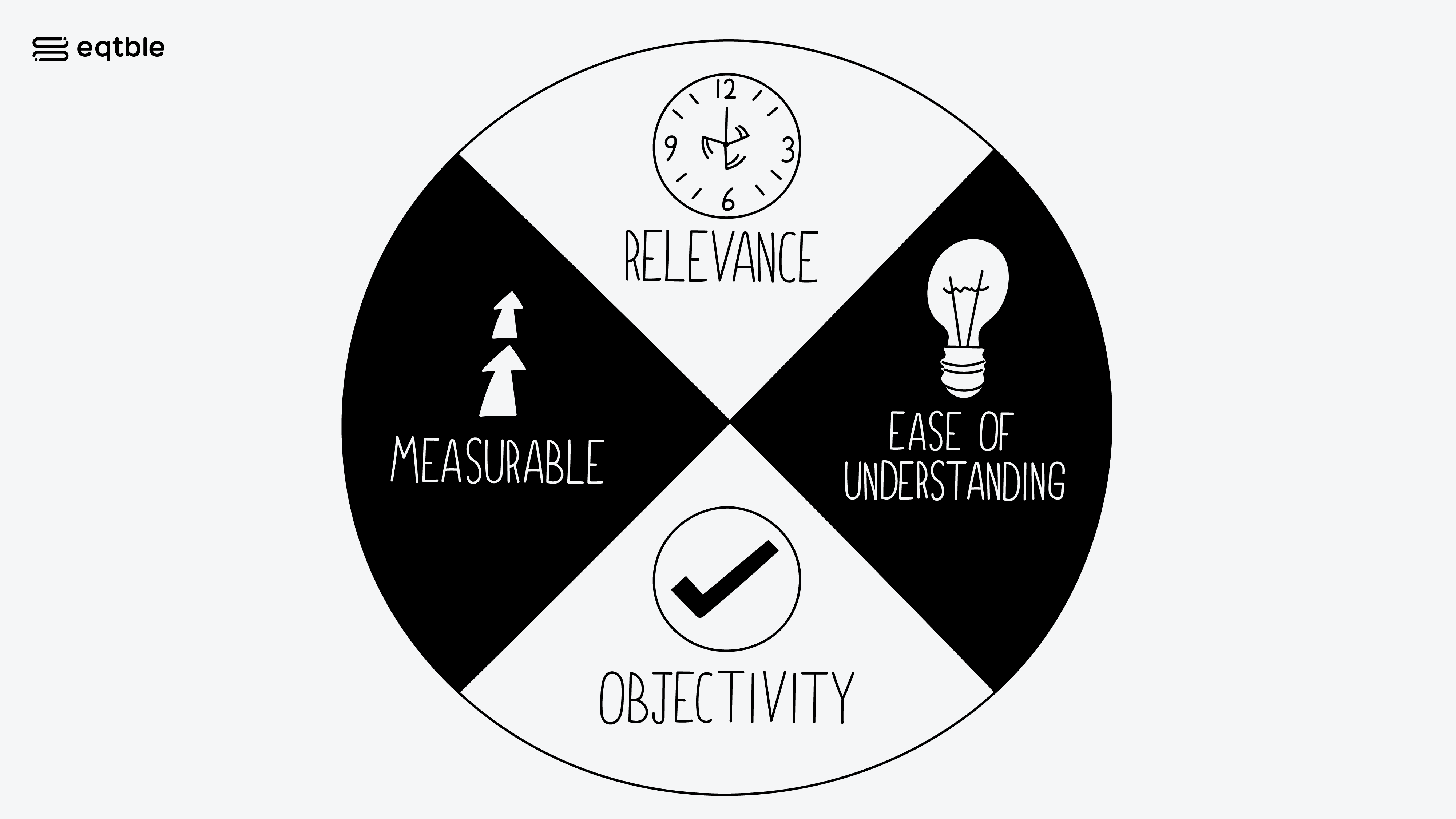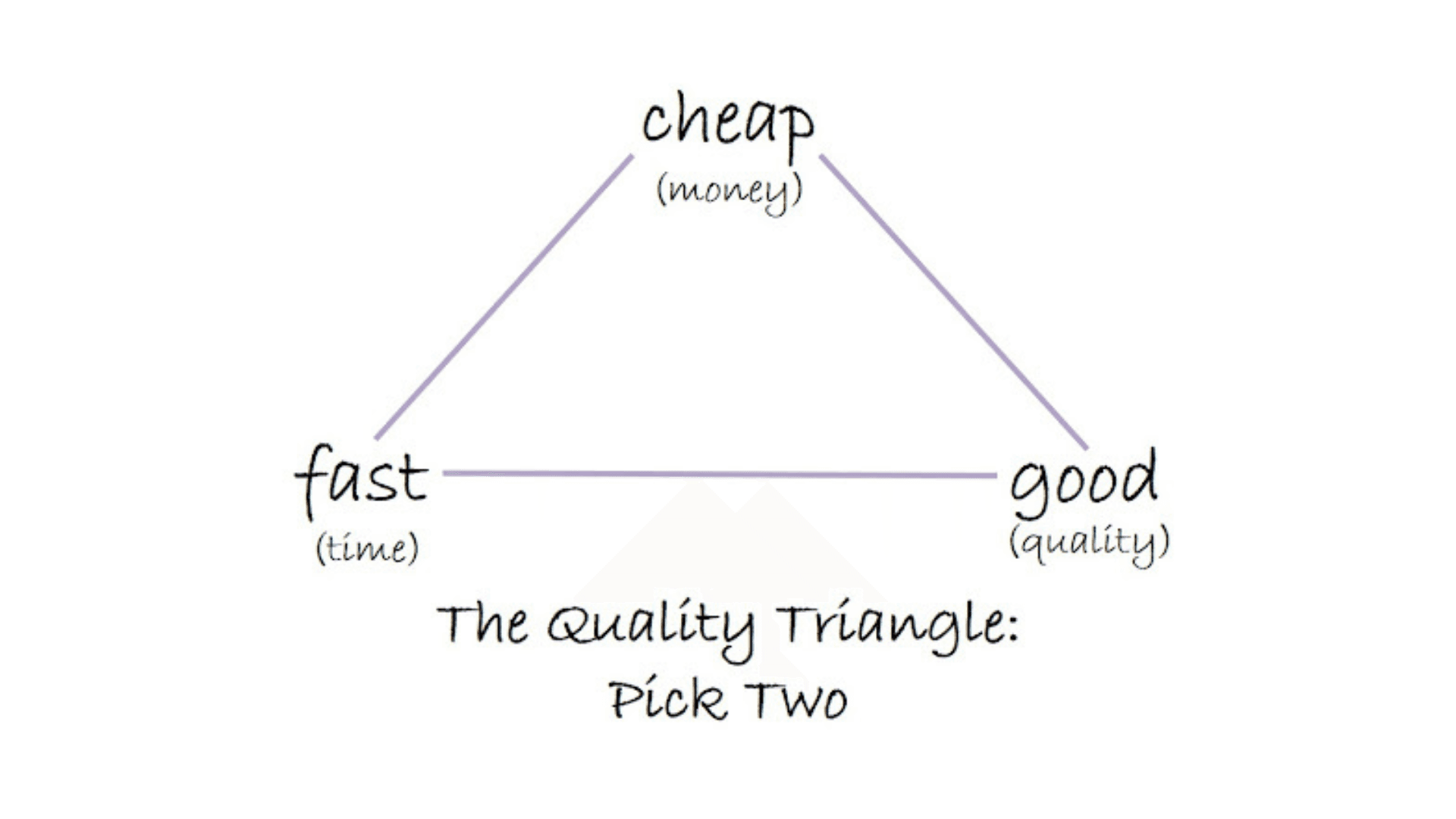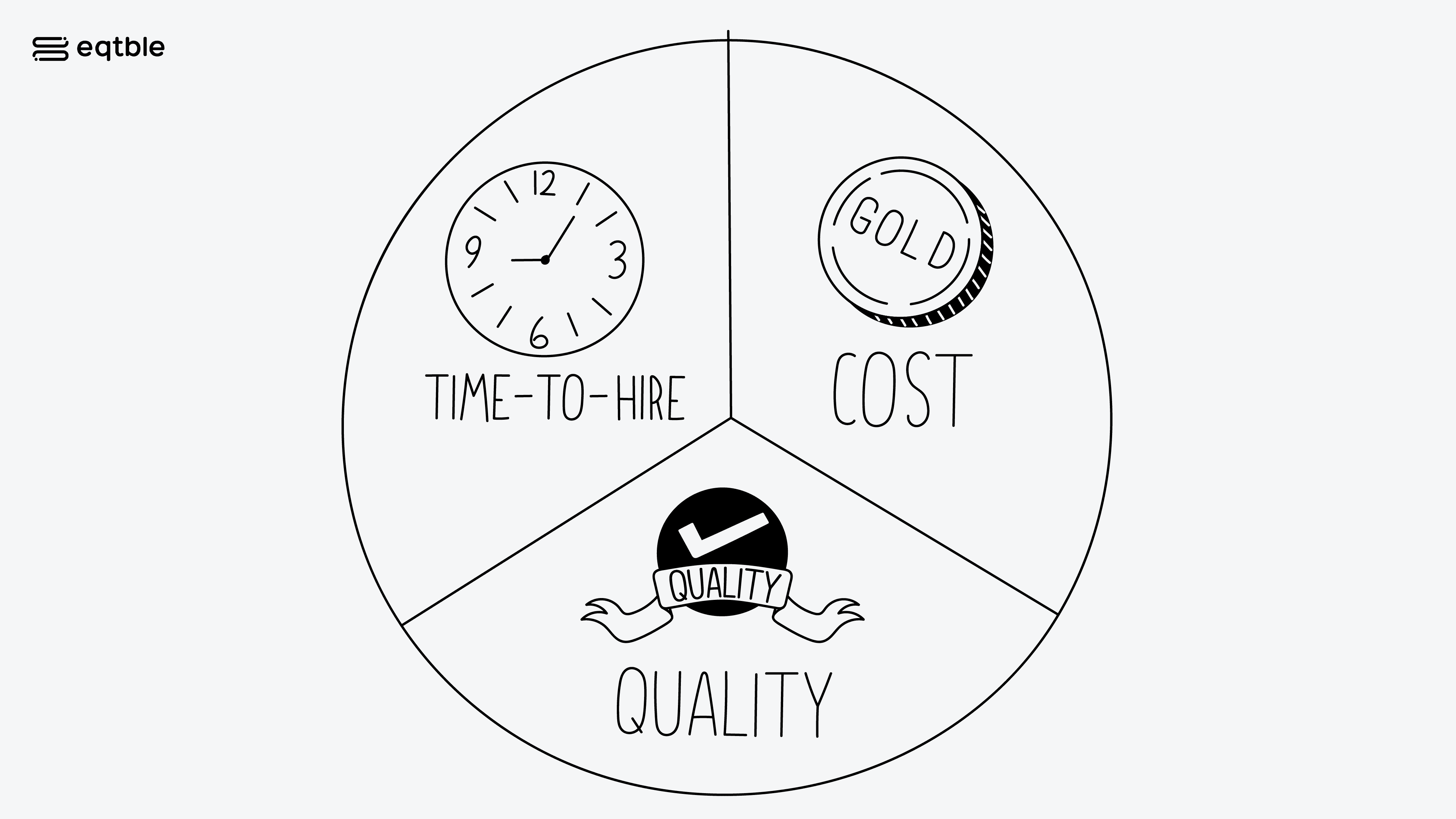Metrics That Matter
November 14, 2023
Time to Hire
Definition:
Time-to-hire, sometimes also referred to as time-to-fill, is a popular, high-level recruiting metric aimed at measuring the overall speed of the recruiting process. It is usually defined as the elapsed time between when approval is given to start hiring for a role and when a candidate accepts the offer.
Strengths:

Relevance - time-to-hire strongly aligns with a business goal of filling open roles as quickly as possible. While more mature organizations, will start the recruiting effort with an appropriate amount of lead time before the role needs to be filled, it is not unusual for the manager’s preferred start time for a role to be “yesterday”.
Ease of understanding - as a high-level time-based metric involving incredibly simple math (subtracting one date from another), most people can easily guess correctly how the metric might be used and how it might be calculated simply from its name. Compared to more nuanced or ambiguous metrics such as quality-of-hire or top-of-funnel throughput, time-to-hire ease of understanding really shines through.
Objectivity - time-to-hire is hard to fudge because the events that mark the beginning and end of the time span have clear evidence and paper trails attached to them, so the self-reporting transition between the stages in the Applicant Tracking System can be spot-checked and corroborated against the external communications and systems used to approve hiring for the role and the signature date on the offer letter of the candidate who eventually accepted the role.
Measurable - the simple math and the clear begin/end events make it relatively easy to measure.
Challenges:
Timeliness - time-to-hire is one of the most lagging common recruiting metrics used, second only to quality-of-hire. As such, when relying solely on it, it will take several months to notice that “something is off” and when implementing an initiative aimed at improving this metric, it will take several months to see the impact of the initiative. This, in turn, will make it harder to attribute the change in the metric to the initiative, and not to other organic or uncontrollable changes that have happened at the same time.
Actionability - a good metric is one that clearly indicates which actions can be taken to improve it. However, this is not the case with time-to-hire. As a high-level metric, it is affected by a number of factors, both those that the company can control, such as the responsiveness of the recruiter and the interview team, the complexity of the role design, the design of the interview process itself, and the company's compensation philosophy, and those that it cannot control, such as the availability of talent in the location where the position needs to be filled or the candidate's responsiveness in the interview process.
Adverse behavior - as the famous W. Edward Demings quote goes: “If you give a manager a numerical target, he’ll make it even if he has to destroy the company in the process.” a myopic focus on time-to-hire, for example, by making it the only metric recruiters are measured by, or offering financial incentives to hitting a time-to-fill target can easily lead to counterproductive compromises elsewhere. As this classic variation on the project management triangle suggests, you can’t have it all.

Without a deeper change to the underlying system, an extreme focus on speed will either cost a lot more (more recruiters, external agencies, out-of-band offers) or will force a compromise in the quality of the candidates hired.
Uses:
Continuous improvement at the role/portfolio level - as mentioned above, time-to-hire is a good high-level health metric but not a very good diagnostic metric. It can let us know that “something is off” but it can’t tell us what. Therefore, a notable change in time-to-hire can be a helpful motivator, or trigger, for when a deeper statistical analysis, such as understanding the effect sizes of the various factors influencing time-to-hire, might be needed. A more targeted, and likely more effective action can then be taken based on the analysis.
Predictive modeling - as a business matures, a premium is placed on its ability to predict its operational performance and plan appropriately. Its recruiting operations are not exempt from that expectation. Mature recruiting teams are expected to build a reasonably accurate capacity model and be able to commit to a realistic hiring plan and deliver on said plan. While the past is not a perfect predictor of the future, it is a useful input, and while working off average time-to-hire will likely lead to gross misestimations, using a more nuanced time-to-hire model, similar to the one mentioned above, can help the team commit to a realistic hiring plan and deliver on it. A good illustrative example of a model used to accomplish just that can be found here. Remember that YMMV (Your Mileage Will Vary).
In sum:

Time-to-hire is a helpful high-level recruiting health metric used to monitor and predict the overall speed of the recruiting process. Not weaponizing it and pairing it with counter-metrics (cost, quality) can help avoid some of the adverse effects of over-indexing on it. While not an effective diagnostic metric in and of itself, it is a good jumping-off point for analysis that will uncover the various factors that drive it, and crafting more effective interventions based on those.







